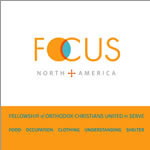The Sunday of Orthodoxy
 In the Orthodox tradition the icon is not merely an adornment in the church building or an object to be used in worship: people pray before it, they kiss it and treat it as a sacred object.
In the Orthodox tradition the icon is not merely an adornment in the church building or an object to be used in worship: people pray before it, they kiss it and treat it as a sacred object. In spite of the existence of icons from distant antiquity there have at various times been tendencies opposed to the veneration of icons. In the seventh and eighth centuries these tendencies culminated in the iconoclast heresy that was condemned at the Seventh Ecumenical Council. The perennial accusation of the iconoclasts against the venerators of icons was that of idolatry. The basic argument was the Old Testament prohibition to depicting God: ‘You shall not make for yourself a graven image, or any likeness of anything that is in heaven above, or that is in the earth beneath, or that is in the water under the earth; you shall not bow down to them or serve them; for I the Lord your God am a jealous God’ (Ex.20:4-5). It is obvious, however, that the words quoted are directed at the idols of pagan peoples who worshipped them.
The New Testament is the revelation of God Who became man and Who could be seen by people. That which is invisible cannot be depicted in images, while that which is visible can be depicted as it is no longer the product of fantasy, but a reality. St John of Damascus presents us with the notion that the Old Testament prohibition of depicting the invisible God points towards the possibility of depicting Him when He becomes visible: ‘It is obvious that when you contemplate God becoming man, then you may depict Him clothed in human form. When the invisible One becomes visible to flesh, you may then draw His likeness... Use every kind of drawing, word, or colour’.
The iconoclast heresy of the eighth century was a continuation of the Christological heresies discussed at earlier Ecumenical Councils. The defense of icons became a defense of the belief in the Incarnation of Christ, for iconoclasm was one of the ways of denying the reality of this Incarnation. For the Orthodox, the icon is not an idol substituting the invisible God, but a symbol and sign of His presence in the Church. The Fathers of the Seventh Ecumenical Council concurred with St Basil the Great in saying that ‘the honour rendered to the image goes over to the Prototype’. The Council insisted that, in bowing down to the icon, the Christian does not worship wood and colours, but the one depicted on wood — Christ, the Holy Virgin, the saints. There is therefore nothing in common between idolatry and the veneration of icons. The icon is not something standing before the human person as a sole and self-sufficient object for worship. It is not even something placed between the person and God. To use the expression of Fr Paul Florensky, the icon is a window onto the other world: through the icon the human person comes into direct contact with the spiritual world and those who live there.







